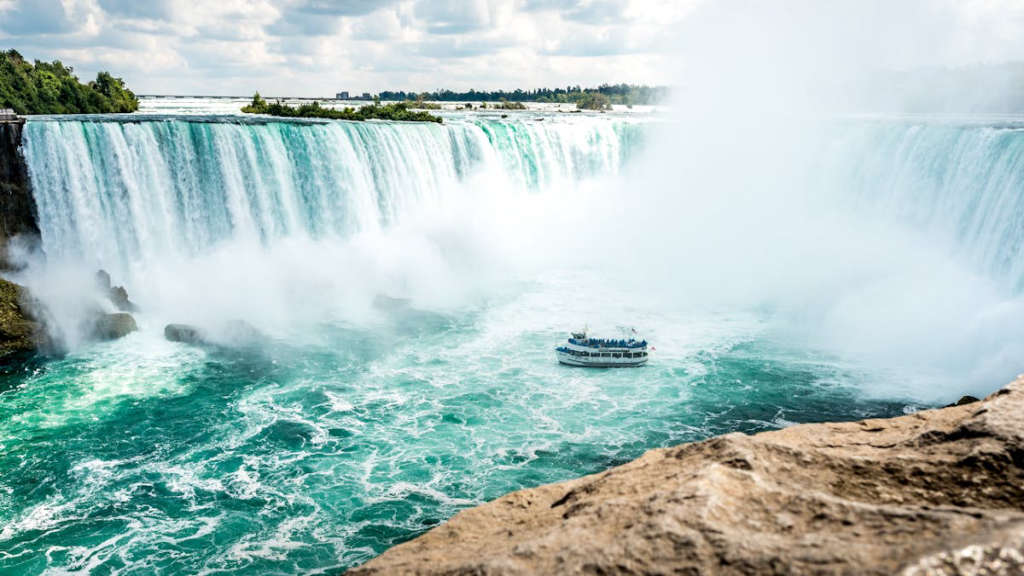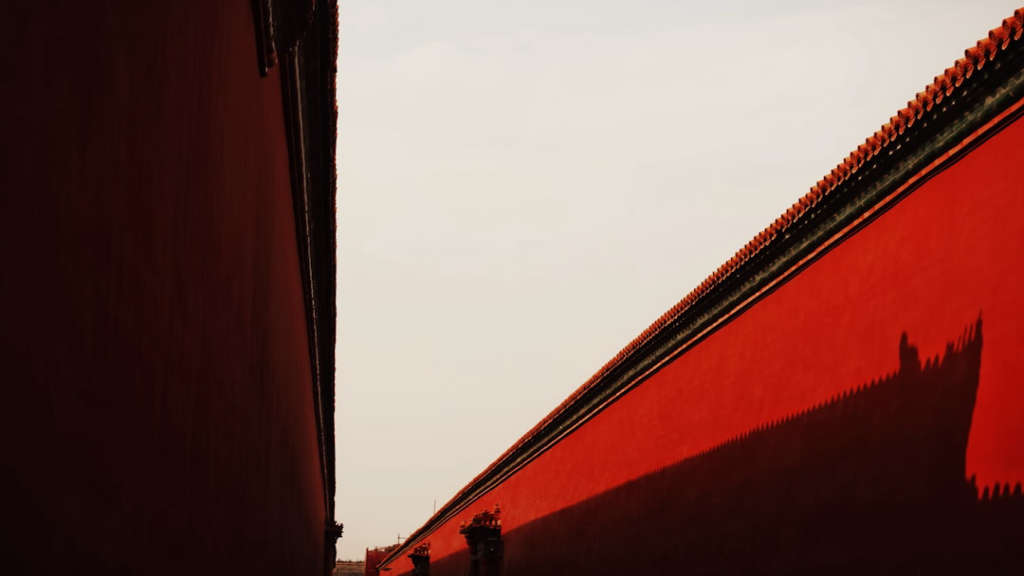The Mona Lisa has long been regarded as one of the most famous and enigmatic paintings in the world. Housed in the Louvre museum in Paris, the Mona Lisa, or See Mona Lisa In Paris, has captivated art enthusiasts and casual viewers alike for centuries. The history and significance of seeing this famous painting in person is an experience like no other. From the historical artwork array by the legendary Leonardo da Vinci, to the cultural impact it has had, seeing the Mona Lisa in Paris is a must for anyone with an appreciation for art and history.
Main Points:
- The historical significance of the Mona Lisa in the art world
- The cultural impact of seeing the Mona Lisa in person
- The experience of visiting the Louvre museum in Paris
- The lasting legacy of Leonardo da Vinci’s masterpiece

The Enigmatic Smile: Unraveling the Mystery of the Mona Lisa
When it comes to iconic works of art, few are as famous or enigmatic as the Mona Lisa. Housed in the Louvre Museum in Paris, this masterpiece by Leonardo da Vinci has captivated the imaginations of art lovers for centuries. Despite its small size, the painting’s enigmatic smile and mysterious gaze continue to intrigue and inspire.
The History of the Mona Lisa
Before you see Mona Lisa at the Louvre Museum, it’s important to understand the history behind this iconic work of art. Leonardo da Vinci began painting the Mona Lisa in 1503, and it is believed that he continued working on the piece until 1517. The subject of the painting is Lisa Gherardini, the wife of a wealthy Florentine merchant. The Mona Lisa has had a tumultuous history, including being stolen from the Louvre in 1911 and being the subject of various theories and controversies.
Why Visit the Louvre to See Mona Lisa?
- To witness the enigmatic smile in person
- To experience one of the most famous works of art in art history
- To appreciate the skill and technique of Leonardo da Vinci up close
There is something truly special about seeing the Mona Lisa in person. Her enigmatic smile seems to follow you as you move, and the level of detail and artistry in the painting is truly remarkable. Visiting the Louvre Museum to see the Mona Lisa is a must for any art lover or history enthusiast.
In conclusion, the Mona Lisa continues to capture our collective imagination, and the enigmatic smile is just one part of what makes this painting so iconic. When you visit the Louvre Museum in Paris, be sure to see Mona Lisa for yourself and unravel the mystery of this timeless masterpiece.

The Evolution of Art Appreciation: Impact of the Mona Lisa
Throughout history, art has been an integral part of human culture and society. From the earliest cave paintings to the masterpieces of the Renaissance, art has served as a reflection of the human experience and a means of expression. One of the most iconic and influential pieces of art in history is the Mona Lisa, painted by the renowned artist Leonardo da Vinci.
The Mona Lisa, currently housed in the Louvre museum, is a symbol of artistic mastery and has had a profound impact on the evolution of art appreciation. Its enigmatic smile and haunting gaze have captivated audiences for centuries, leaving a lasting impression on the world of art.
Historical Significance
When Leonardo da Vinci created the Mona Lisa in the early 16th century, he could not have anticipated the enduring impact his work would have on the world. The painting’s technical brilliance and emotional depth paved the way for a new era of art, influencing countless artists and art lovers for generations to come.
Cultural Influence
The Mona Lisa has become a cultural icon, transcending its original status as a portrait to become a symbol of universal beauty and intrigue. Its influence can be seen in literature, film, and popular culture, cementing its place in the collective consciousness of society.
Artistic Legacy
From the time of its creation to the present day, the Mona Lisa continues to inspire artists and art enthusiasts around the world. Its impact on art appreciation is undeniable, as it has set a standard for beauty, technique, and storytelling in the world of art.
| Leonardo da Vinci | Louvre museum | Mona Lisa |
|---|---|---|
| Italian artist and polymath | Located in Paris, France | Renowned portrait painting |
In conclusion, the impact of the Mona Lisa on the evolution of art appreciation cannot be overstated. Its historical significance, cultural influence, and artistic legacy have solidified its place as one of the most important pieces of art in the world, continuing to inspire and captivate audiences to this day.

Influence of the Mona Lisa on Western Art and Culture
The Mona Lisa, painted by the Italian artist Leonardo da Vinci, is one of the most iconic and influential works of art in Western history. This masterpiece has had a profound impact on Western art and culture, shaping the way we perceive and appreciate art.
One of the ways in which the Mona Lisa has influenced Western art is through its portrayal of the human form. The painting’s enigmatic smile and captivating gaze have inspired countless artists to explore the complexities of human expression and emotion in their own work. The Mona Lisa’s subtle yet powerful portrayal of the human face has become a benchmark for artists striving to capture the depth and complexity of the human experience.
Furthermore, the Mona Lisa has influenced Western culture by becoming a symbol of beauty and femininity. The painting’s subject, Lisa Gherardini, has been idealized and romanticized as the epitome of female beauty, leading to the Mona Lisa becoming an enduring symbol of femininity and grace. This has had a lasting impact on Western society’s perception of beauty and has influenced representations of women in art, literature, and popular culture.
Historical artwork
The Mona Lisa’s historical significance cannot be overstated. Its impact on Western art and culture has been profound, shaping the way we create, perceive, and appreciate art. The painting has inspired generations of artists to explore the human form and has become a symbol of beauty and femininity in Western culture. Its influence is undeniable and continues to resonate throughout the art world and beyond.
In conclusion, the Mona Lisa’s influence on Western art and culture is undeniable. Its portrayal of the human form and its status as a symbol of beauty and femininity have left an indelible mark on the art world and Western society as a whole. The Mona Lisa will continue to inspire and captivate audiences for generations to come, ensuring its place as a cornerstone of Western art and culture.

A Glimpse into the Renaissance: Understanding the Context of the Mona Lisa
When we look at the famous painting of the Mona Lisa, we are not just seeing a masterpiece of art; we are also witnessing a glimpse into the Renaissance period. This iconic painting by Leonardo da Vinci holds a significant place in art history, and understanding the context of the time can provide a deeper appreciation for the work.
Renaissance Art and Culture
The Renaissance was a time of great cultural and artistic transformation in Europe. It was a period marked by a revival of interest in the classical arts, literature, and learning. The era saw a shift from the medieval to the modern world, with a renewed focus on humanism and individualism.
Artists during the Renaissance were not only seen as craftsmen but as creative geniuses. They sought to capture the beauty of the natural world and the human form, as well as to express the depth of human emotions. The Mona Lisa is a prime example of this, as it portrays a sense of mystery and enigma through the subject’s gaze and expression.
Leonardo da Vinci: A Renaissance Polymath
Leonardo da Vinci, the artist behind the Mona Lisa, was a true Renaissance man. He was not only a painter but also a scientist, engineer, and inventor. His curiosity and passion for knowledge were emblematic of the spirit of the Renaissance.
Da Vinci’s meticulous attention to detail and his innovative techniques, such as sfumato (the blending of colors and tones), set him apart as a visionary artist of his time. The Mona Lisa exemplifies his mastery of technique and his ability to capture the essence of the human form in a way that was unprecedented.
The Symbolism of the Mona Lisa
As we delve into the context of the Mona Lisa, it is important to consider the symbolism behind the painting. The enigmatic smile of the subject, the use of light and shadow, and the landscape in the background all contribute to the layers of meaning within the artwork.
While the true identity of the woman in the painting remains a mystery, the Mona Lisa represents the ideal of beauty and femininity during the Renaissance. Her timeless allure and the sense of intrigue that surrounds her have made the painting a symbol of artistry and enigma.
In conclusion, the Mona Lisa is not just a portrait; it is a window into the world of the Renaissance. By understanding the cultural and artistic context of the time, we can gain a deeper understanding of the significance of this iconic masterpiece.

Behind the Canvas: Techniques and Innovations in the Mona Lisa
When we talk about the iconic Mona Lisa, we often focus on her enigmatic smile and captivating gaze. However, what lies behind the canvas is just as fascinating. The techniques and innovations employed by Leonardo da Vinci in creating this masterpiece continue to inspire and awe art lovers and historians to this day.
Unveiling the Layers
One of the most remarkable aspects of the Mona Lisa is the way da Vinci used multiple layers to create depth and luminosity in the painting. By employing a technique known as sfumato, he blurred the lines and edges, allowing the forms to merge seamlessly into one another. This created a sense of softness and realism that was unprecedented in his time.
The Innovation of Perspective
Da Vinci’s mastery of perspective is evident in the Mona Lisa, particularly in the landscape background. He used atmospheric perspective to create a sense of depth and distance, with the colors becoming progressively lighter and cooler as they recede into the background. This innovation revolutionized the way artists approached spatial representation in their work.
The Use of Light and Shadow
Another groundbreaking technique employed by da Vinci in the Mona Lisa is his use of chiaroscuro. By skillfully manipulating light and shadow, he created a three-dimensional effect that gave the figure a sense of solidity and presence. The subtle transitions between light and dark areas added to the painting’s enigmatic quality, drawing the viewer in and compelling them to engage with the work on a deeper level.
In conclusion, the techniques and innovations found in the Mona Lisa continue to captivate and inspire art enthusiasts and scholars alike. From the use of multiple layers to the mastery of perspective and the manipulation of light and shadow, da Vinci’s genius shines through in every brushstroke. The legacy of this iconic painting serves as a testament to the enduring power of artistic innovation and creativity.
Mona Lisa’s Journey: From Creation to Parisian Icon
The enigmatic smile, the haunting gaze, and the timeless beauty of the Mona Lisa have made her one of the most iconic works of art in the world. But her journey from creation to Parisian icon is as fascinating as the painting itself. Let’s take a closer look at the story behind this masterpiece.
The Creation of a Masterpiece
Leonardo da Vinci began working on the Mona Lisa in 1503, and it is believed that he continued to work on the painting until 1517. The meticulous attention to detail and the revolutionary use of sfumato technique made the painting a true masterpiece of the Renaissance era. The subtle blending of colors and the enigmatic expression on the subject’s face elevate the painting to a level of timeless beauty.
A Journey Through Time
After Leonardo’s death, the painting was acquired by King Francis I of France and has been housed in the Louvre Museum in Paris since 1797. Over the centuries, the Mona Lisa has become a symbol of artistry, mystery, and beauty, captivating millions of visitors who come to admire her in person.
Parisian Icon
The Mona Lisa’s fame skyrocketed in 1911 when she was stolen from the Louvre. The heist made headlines around the world, and the painting was missing for two years before being recovered. This event only added to the Mona Lisa’s allure and solidified her status as a Parisian icon.
“The Mona Lisa is a mystery that only deepens the more you look at her. She is a testament to the power of art to transcend time and captivate the human soul.” – Art Historian
| Year | Event |
|---|---|
| 1503-1517 | Leonardo da Vinci creates the Mona Lisa |
| 1797 | The painting is housed in the Louvre Museum |
| 1911 | The Mona Lisa is stolen and recovered |
The Mona Lisa Phenomenon: Analyzing its Enduring Popularity
The Mona Lisa, painted by Leonardo da Vinci in the 16th century, is perhaps one of the most famous and enigmatic artworks in history. Despite being centuries old, the painting continues to captivate and intrigue audiences around the world. This enduring popularity has led to what can only be described as the “Mona Lisa Phenomenon.”
Reasons for the Mona Lisa’s Enduring Popularity
- The Mona Lisa’s enigmatic smile: The mysterious expression on the subject’s face has sparked countless debates and interpretations, making it a subject of fascination for art enthusiasts and scholars alike.
- Leonardo da Vinci’s artistic genius: The painting is a testament to da Vinci’s mastery of technique and his ability to capture the human form in a lifelike manner, making it a revered masterpiece in the art world.
- Historical significance: The Mona Lisa has survived wars, theft, and vandalism, adding to its allure as a symbol of resilience and endurance.
Despite the passage of time, the Mona Lisa remains a symbol of artistic excellence and continues to inspire and intrigue people from all walks of life.
Unveiling the Enigma: Interpretations and Symbolism in the Mona Lisa
Leonardo da Vinci’s iconic painting, the Mona Lisa, has captivated the world with its enigmatic smile and mysterious aura. The enigma surrounding this masterpiece has sparked numerous interpretations and discussions among art enthusiasts and scholars alike. Beneath the surface of her enigmatic smile lies a web of symbolism and hidden meanings, giving rise to a myriad of theories regarding the true identity of the woman in the painting and the significance of the elements depicted.
Interpretations of the Enigmatic Smile
The central focus of the Mona Lisa is undoubtedly the enigmatic smile that has puzzled viewers for centuries. Some scholars argue that the smile reflects the artist’s mastery of depicting human emotions, while others believe that it holds a deeper, symbolic meaning. Enigma smile symbolism has become a subject of fascination, with various interpretations suggesting that it represents everything from contentment and melancholy to secrecy and wisdom.
Symbolism in the Landscape
Beyond the figure of the Mona Lisa, the landscape in the background of the painting has also been subjected to extensive analysis. The winding river, distant mountains, and ethereal atmosphere have prompted scholars to search for symbolism hidden meanings within the seemingly idyllic scene. Some interpretations suggest that the landscape symbolizes the harmony between humanity and nature, while others propose more esoteric interpretations, linking the elements to ancient myths and allegories.
Unveiling the Enigma
As the enigma surrounding the Mona Lisa continues to intrigue art historians and researchers, the painting remains a source of inspiration and fascination for art lovers around the world. Whether delving into the symbolism interpretations or contemplating the enigmatic smile, the Mona Lisa invites viewers to unravel its mysteries and embark on a journey through art, history, and the human experience.
| Symbolism | Interpretations | Enigma |
|---|---|---|
| Enigmatic Smile | Artistic Mastery | Mysterious Aura |
| Landscape Symbolism | Harmony with Nature | Ethereal Atmosphere |
The Mona Lisa Experience: Impact on Visitors and Art Enthusiasts
When it comes to iconic works of art, the Mona Lisa certainly holds a special place in the hearts of art enthusiasts around the world. The impact of experiencing this masterpiece in person is often profound and transformative.
For many visitors to the Louvre Museum in Paris, seeing the Mona Lisa for the first time is a truly awe-inspiring moment. The enigmatic smile of the subject and the technical mastery of Leonardo da Vinci leave a lasting impression that cannot easily be forgotten.
Art enthusiasts often find themselves captivated by the mysterious aura that surrounds the painting. The experience of standing in front of such a renowned piece of art can evoke a sense of wonder and admiration.
Effect on Visitors
For many visitors, the Mona Lisa experience is a highlight of their trip to Paris. The chance to see this masterpiece up close can be a deeply emotional experience, leading to a sense of connection with the artist and the subject of the painting.
Some may even find themselves overwhelmed by the sheer magnitude of the painting and its impact on the art world. It is not uncommon to see tears of joy or reverence shed in the presence of this iconic work.
In conclusion, the Mona Lisa continues to have a profound impact on visitors and art enthusiasts alike. Its ability to evoke emotions and inspire awe is a testament to the enduring power of great works of art.
Conclusion
In conclusion, the Mona Lisa is not only a famous work of art, but also a symbol of the rich history and culture of Paris. Seeing the Mona Lisa in Paris is an experience that offers a rare opportunity to connect with one of the most iconic pieces of art in the world. Whether you are an art enthusiast or simply a curious traveler, a visit to the Louvre to See The Mona Lisa In Paris is a must-do activity that will leave a lasting impression. The history and significance of this masterpiece can only truly be appreciated in person, making it a truly unforgettable experience for anyone who has the opportunity to witness it.
Frequently Asked Questions
What is the best time to visit the Mona Lisa in Paris?
The best time to visit the Mona Lisa is early morning or late afternoon to avoid the crowds.
How long does it take to see the Mona Lisa?
The average visit to the Mona Lisa takes about 15-30 minutes.
Is it necessary to book tickets in advance to see the Mona Lisa?
It is recommended to book tickets in advance to avoid long lines and secure a time slot for the visit.
Can I take photos of the Mona Lisa?
Photography is allowed, but the use of flash and tripods is not permitted.
Is the Mona Lisa the only artwork worth seeing at the Louvre?
The Louvre is home to thousands of artworks, and there are many other masterpieces worth seeing.
Is there a specific dress code to see the Mona Lisa?
There is no specific dress code, but visitors are encouraged to dress modestly and comfortably.
Is the Mona Lisa always on display?
The Mona Lisa is almost always on display, but there might be occasional conservation or loan-related reasons for it to be temporarily absent.
Are there guided tours available to see the Mona Lisa?
Yes, the Louvre offers guided tours that include a visit to the Mona Lisa.
Can I get close to the Mona Lisa for a better view?
The Mona Lisa is displayed behind protective glass, and visitors must observe from a short distance.
What should I know about the history of the Mona Lisa before visiting?
It’s beneficial to learn about the history and significance of the Mona Lisa to appreciate the artwork during the visit.






















0 Comment